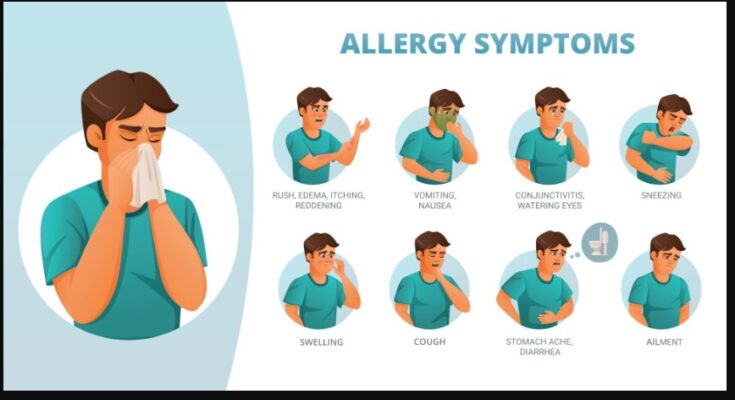Contents
Introduction
Lorphenadine is a widely used medication known for its effectiveness in treating various allergic conditions. This comprehensive guide aims to provide detailed information about Lorphenadine, including its uses, benefits, potential side effects, and precautions.
Whether you are a healthcare professional or a patient seeking more information, this article will help you understand everything you need to know about Lorphenadine.
What is Lorphenadine?
Lorphenadine is an antihistamine that relieves symptoms of allergy, hay fever, and the common cold. These symptoms may include rash, itching, watery eyes, itchy eyes/nose/throat, cough, runny nose, and sneezing.
Lorphenadine works by blocking the action of histamine, a substance in the body that causes allergic symptoms.
Uses of Lorphenadine
Lorphenadine is primarily used for:
- Allergy Relief: Helps in managing symptoms of allergic reactions such as itching, swelling, and rashes.
- Hay Fever: Relieves hay fever symptoms, including sneezing, runny nose, and itchy eyes.
- Common Cold: Alleviates common cold symptoms, such as runny nose and sneezing.
- Skin Conditions: Treats skin conditions like hives and contact dermatitis that result in itching and swelling.
Benefits of Lorphenadine
The benefits of using Lorphenadine include:
- Effective Symptom Management: Provides quick relief from allergy and cold symptoms.
- Non-Drowsy Formula: Unlike some antihistamines, Lorphenadine is less likely to cause drowsiness, making it suitable for daytime use.
- Wide Availability: Available over-the-counter and by prescription, making it accessible to many patients.
- Multi-Symptom Relief: Effective in treating multiple symptoms associated with allergies and colds.
How to Use Lorphenadine
Using Lorphenadine correctly is crucial for its effectiveness:
- Dosage: Follow the dosage instructions provided by your healthcare provider or the product packaging. The usual dosage for adults and children over 12 years is one tablet (10 mg) once daily.
- Method: Take Lorphenadine by mouth with or without food.
- Consistency: Use it simultaneously daily to maintain an even level of the medication in your body.
- Duration: Do not exceed the recommended duration of use unless advised by a healthcare provider.
Potential Side Effects
While Lorphenadine is generally well-tolerated, some individuals may experience side effects, including:
- Common Side Effects:
- Headache
- Drowsiness (though less common)
- Dry mouth
- Fatigue
- Serious Side Effects (rare):
- Severe allergic reactions (rash, itching/swelling, severe dizziness, trouble breathing)
- Fast or irregular heartbeat
- Persistent dizziness
If you experience any serious side effects, seek medical attention immediately.
Precautions and Interactions
Before taking Lorphenadine, consider the following precautions:
- Medical History: Inform your doctor if you have any medical history, especially related to kidney or liver disease.
- Allergies: Notify your healthcare provider about any allergies to Lorphenadine or other antihistamines.
- Pregnancy and Breastfeeding: Consult your doctor before using Lorphenadine if you are pregnant or breastfeeding.
- Drug Interactions: Lorphenadine may interact with other medications, such as MAO inhibitors and certain antidepressants. Provide your doctor with a list of all your medications and supplements.
Frequently Asked Questions (FAQs)
Q1: Can Lorphenadine be taken with other medications?
A1: To avoid potential interactions, consult your healthcare provider before combining Lorphenadine with other medications.
Q2: Is Lorphenadine safe for children?
A2: Lorphenadine is generally safe for children over 12 years old. For younger children, consult a paediatrician for appropriate dosage and safety.
Q3: Can I take Lorphenadine if I am pregnant?
A3: If you are pregnant or planning to become pregnant, consult your healthcare provider before using Lorphenadine.
Q4: How quickly does Lorphenadine work?
A4: Lorphenadine typically starts to work within 1 to 3 hours, relieving allergy symptoms.
Q5: Can Lorphenadine cause drowsiness?
A5: Lorphenadine is less likely to cause drowsiness than other antihistamines, but some individuals may still experience mild drowsiness.
Conclusion
Lorphenadine is a highly effective antihistamine that offers relief from a variety of allergy and cold symptoms. Understanding its uses, benefits, and potential side effects can help you use this medication safely and effectively. Always follow your healthcare provider’s instructions and consult them with any concerns or questions about Lorphenadine.
Doing so can maximize the benefits and minimize the risks associated with this medication.



